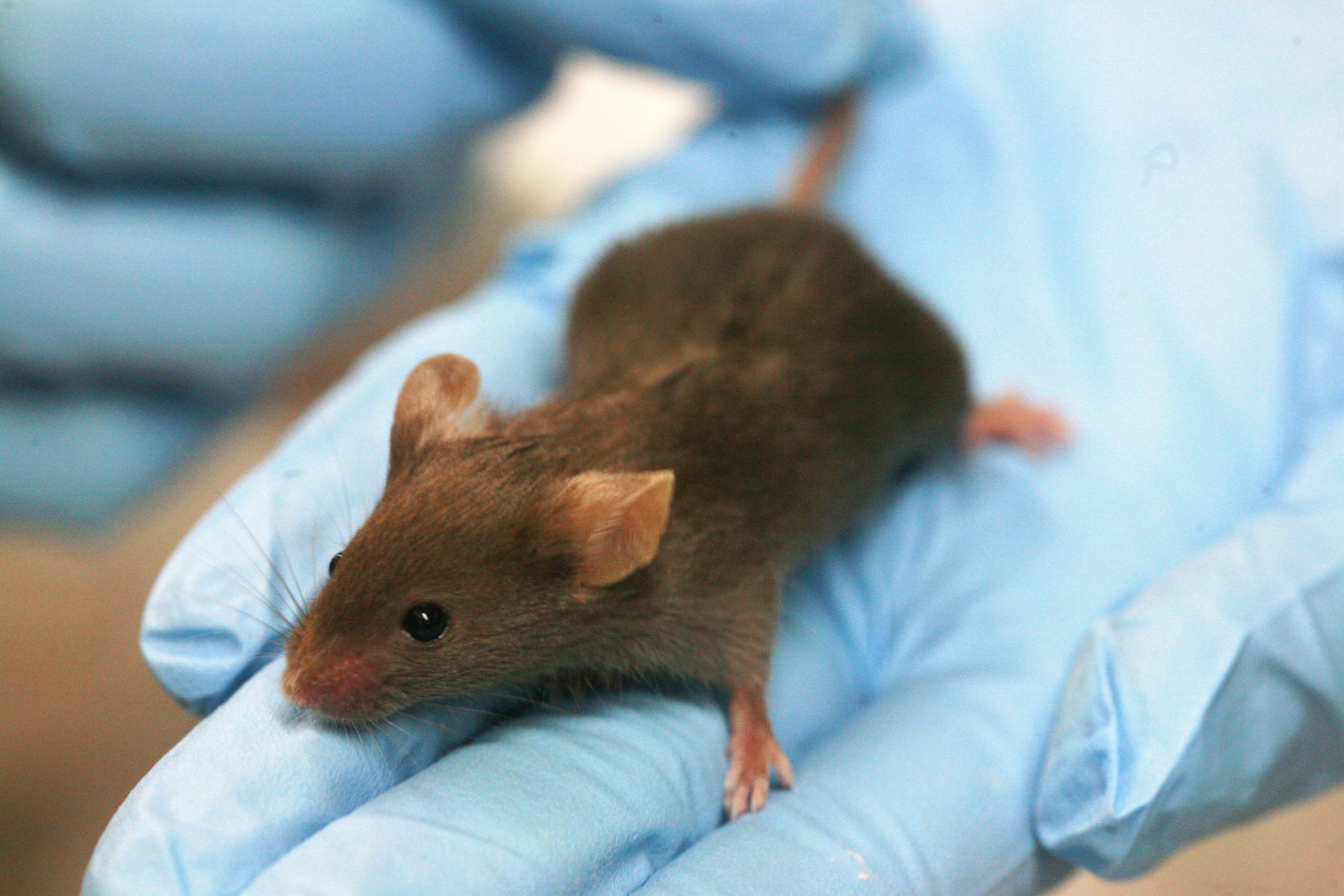A Little Furry Test for Human Toxicity
PLOS Medicine Associate Editor Laureen Connell discusses a research article from 2014 in which Gary Peltz and colleagues described a new mouse model with a humanized liver that can replicate human-specific toxicity and improve safety of clinical trials.

In 1993, fialuridine (a nucleoside analogue used to treat hepatitis B virus infection) was tested in humans in a phase II trial after earlier preclinical testing in animals suggested the drug was safe. Some participants had a variety of severe reactions to the drug, including liver failure, lactic acidosis, and steatosis, which led to the death of five participants. Human-specific drug toxicity is a potential problem that requires screening early in drug development. The development of accurate models in the lab to test drugs for toxicity before serious side effects arise during clinical trials in humans is an important part of developing therapeutics. Also, more nucleoside analogues are being developed as therapeutics, and therefore improved screening tools are needed for human-specific toxicity. Peltz and colleagues recently explored this problem when they investigated whether testing fialuridine in a new mouse model would have predicted the problems found in humans during clinical trials.
Chimeric TK-NOG mice with humanized livers were generated in 2011 and have been used to predict human-specific drug metabolism and interactions with other drugs. These chimeric TK-NOG mice have been transplanted with human liver cells in order to establish a long-lived mature “human organ.” Previous mouse models used for testing drug toxicity in humans had many limitations and did not accurately predict toxicity in humans. The TK-NOG chimeric mouse was generated by expressing a herpes simplex virus type 1 thymidine kinase (TK) transgene within the liver of a highly immunodeficient mouse strain (NOG). The mouse’s liver cells expressing the transgene were ablated by exposure to an antiviral drug, allowing transplanted human liver cells to develop into a humanized liver, with a three-dimensional architecture and gene expression pattern characteristic of mature human liver and containing only a small percentage of mouse liver cells.
Though TK-NOG chimeric mice had been used previously to predict human drug metabolism and drug-drug interactions, it was not known whether chimeric TK-NOG mice could predict human-specific drug toxicities. To study this question, the authors treated chimeric and control TK-NOG mice with several doses of fialuridine and found that fialuradine caused acute liver failure in chimeric mice. Convincingly, the steatosis and lipid and mitochondrial abnormalities matched the complications seen in fialuridine-treated human participants and developed in the regions of their livers that contained human cells. This study demonstrated that TK-NOG chimeric mice are a useful tool for testing the toxicity of candidate drugs and could, therefore, improve the safety of future clinical studies. The generation and testing of a mouse model that can be used to more effectively screen new therapies for human toxicity is a significant advance and we hope will lead to improved safety of drug testing in humans.
PLOS Medicine articles typically have direct clinical or public policy implications, and the standard for translational research articles is that the work must advance our understanding of novel mechanisms of a significant clinical problem or provide a models relevant to the treatment or prevention of major health problems. The development of mouse lines with humanized organs is obviously an important area of research in translational medicine, and the findings in this PLOS Medicine article could lead to prevention of major health problems. These findings are just one example of how solid lab research that addresses relevant and important issues can be translated into the clinic.
You can read the full research article here:
This is post 1 of 8 in PLOS Medicine’s 10th Anniversary blog series on the most interesting and influential articles of the last ten years. You can find links to all the posts in the series as they are published here.

[…] PLOS Medicine Associate Editor Laureen Connell discusses a research article from 2014 in which Gary Peltz and colleagues described a new mouse model with a humanized liver that can replicate human-specific toxicity and improve safety of clinical trials. In 1993, … Continue reading » […]
[…] A Little Furry Test for Human Toxicity The development of accurate models in the lab to test drugs for toxicity before serious side effects arise during clinical trials in humans is an important part of developing therapeutics. Also, more nucleoside analogues are being developed as … Read more on PLoS Blogs (blog) […]